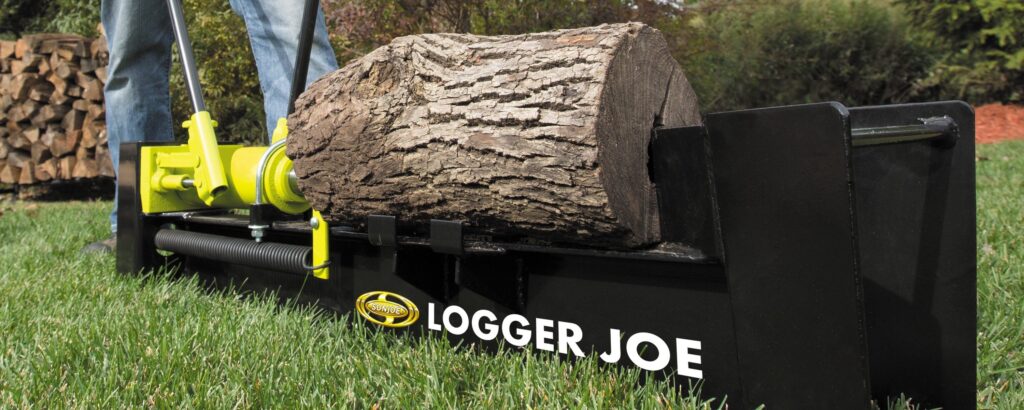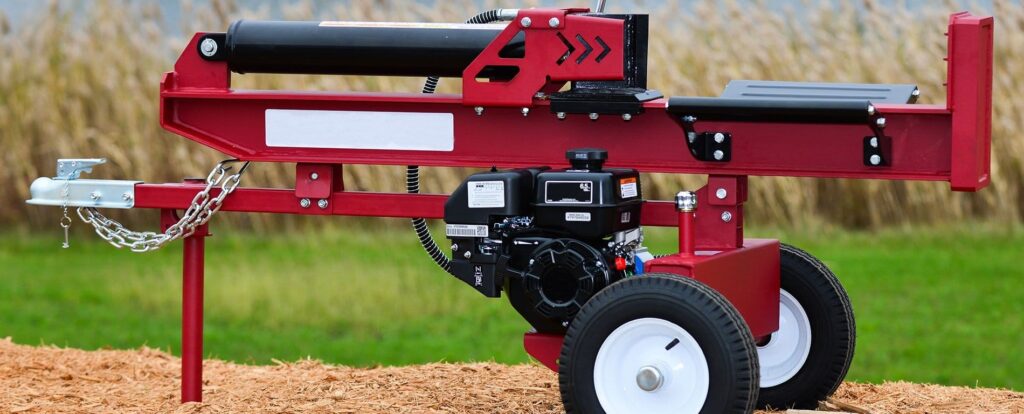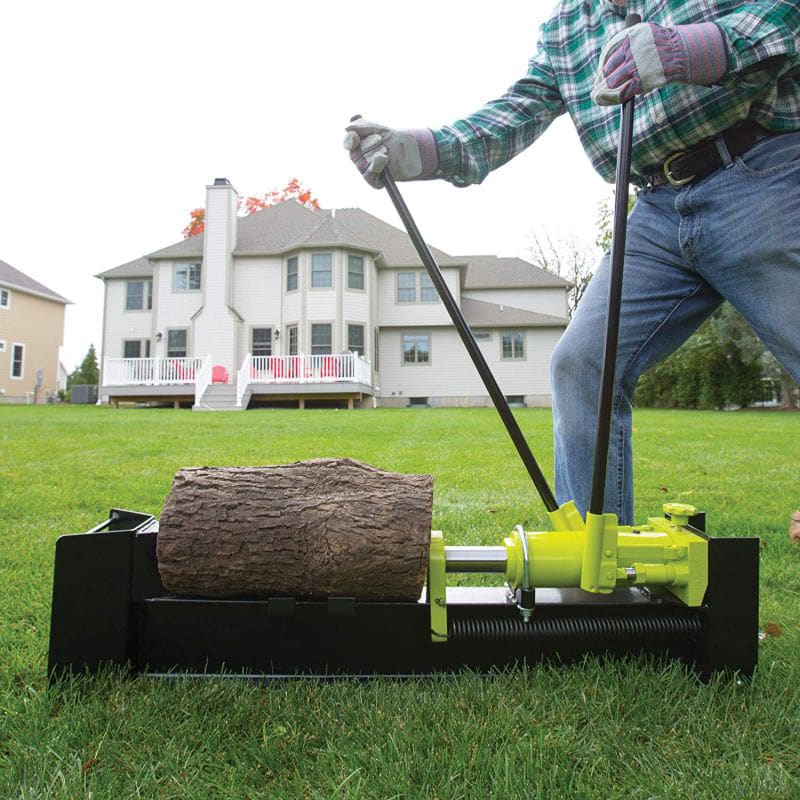Splitting mauls are a common item in households that regularly use firewood. Whether you use wood as a source of alternative energy, to heat up your fireplace, or to fuel things like smokers, the best splitting maul will enable you to cut wood into good-sized chunks for your needs with the least effort. The splitting maul is specifically designed to be used on wood and is used to split wood, where you literally longitudinally force the wood apart, dividing it into thinner chunks. Unlike an axe, it will not fell a tree or bring down a trunk. But it will split the felled tree and wood logs into thinner-sized logs and break larger, chopped logs into smaller pieces.
In this review, we show you how to choose a splitting maul and the important features to consider when buying one. We explain how things like the overall weight of the maul, head weight and handle length, and the head and handle material are critical in determining the effectiveness of the maul.
We’ve spent months analyzing and trying out different splitting mauls. We’ve compared notes with people who have used splitting mauls for years and have come up with a list of the 7 best splitting mauls to buy with the Gransfors Bruks Splitting Maul as our Editor’s Choice. It’s a lot of information, but we’ve broken it down into easy-to-understand bits, with detailed explanations of each point, a comparison table, in-detail review of each maul, and a buying guide to help you find the right product.
More features: vegetable-tanned leather sheath
The Gransfors Bruks Splitting Maul goes through all kinds of woods easily and splits both small and large blocks of wood with ease. Its steel head is strong and sturdy and has an adjoining metal sheath which protects the handle against damage from overstrikes. The handle is made from strong hickory and is smoothed to give a comfortable grip. A couple of grooves towards the end of the handle serve to further boost the grip. The handle measures 29 inches, with the entire maul from head to end of handle measuring 31.5 inches.
This maul measures only 7 pounds; it’s not too heavy for those who worry that excessive weight of the splitting maul would slow them down, neither is it too light to produce the impact required to split a large wood log.
Worried your maul will get dulled by constant rubbing against hard surfaces? Gransfors includes a vegetable-tanned leather sheath with this maul, so your blade is protected against impact with other surfaces whenever it’s not in use.
More features: 53-56 hrc, steel overstrike protector, premium leather sheath
The 1844 Helko Werk Germany Traditional Splitting Maul is sturdily built and effectively splits harder woods like oaks with ease. Likewise, it works on large rounds with the ease of a heavy duty machine. It helps that the handle is extra long at 35 inches. This, no doubt, helps deliver most of the punch needed to get even heavily knotted wood to split.
The German-made 1844 Helko Werk head is constructed from high grade C45 carbon steel and tapers smoothly at the front end, with the poll end of the head laying flat and heavy. It flawlessly carries out the duty of sledgehammer when you need to pound planks into place and delivers the force needed to split heavy woods just as easily.
The handle of the maul is made from Grade A American hickory and is strong and durable. If you’re environmentally-conscious, you’ll be glad to know the hickory used is sustainably grown and harvested. The smooth finishing done on the handle ensures you get a good grip, and the maul stays comfortable even if you use it for hours at a time. To preserve the handle, it’s treated with boiled linseed oil.
Helko Werk includes a steel overstrike protector, leather sheath, and bottle of Axe-Guard protective oil with the splitting maul.
More features: steel overstrike protector
The Halder 3007.160 is a slender splitting maul designed to split any type of wood. It has a strong hickory handle that is smoothly finished for comfortable handling. Its head is made of forged steel for extra hardiness and durability. The head is covered in a forged steel housing that extends to the handle to create a protective steel collar that will shield the handle from overstrikes.
The maul measure 35 inches from top of the head to end of the handle. It’s one of the longer pieces in the market, and with this length, it’s perfect for delivering the forceful punch needed to split wood.
The axe-end of the head is upturned to ensure quick and easy splitting of wood. If you’ve ever had your maul slip off the wood when you attempted to split wood or not successfully split the wood until after the fifth swing, you know how frustrating that can be. This nose will ensure that does not happen.
Halder has included a nylon face at the poll end of the head, which eliminates any possibility of the poll getting damaged by the steel of a splitting wedge. This face is also replaceable, so you don’t have to worry about what to do when it gets worn out.
More features: overstrike collar
The Faithfull Log Splitting Bust Maul is a pocket friendly wood splitter that will effectively split your large wood rounds, the best part being you won’t even have to spend $100 to do it. Sometimes when an item is low-priced, we tend to have doubts about its efficiency and whether it is built to the standards we’ve come to expect. With this Faithfull splitting maul, nothing feels cheap. From the solid head made of forged steel to the strong fiberglass handle that is lightweight but sturdy, everything about this maul is well constructed.
An overstrike collar provides extra protection for the handle, which you can expect to serve you well without breaking, seeing as it is made from fiberglass.
Its 8-pound-weight is considered moderate by splitting maul standards, and if you don’t want a maul that’s too heavy to lift, this is a good choice. It measures 33 inches and will successfully split most of your woods. Because of its slightly lower weight though, you may need to swing it a few more times to split bigger rounds and stubborn woods like oaks.
The flared end of the handle adds a no-slip advantage to the rubber texture, safeguarding your grip and ensuring that the maul does not accidentally slip from your hands.
More features: hand-forged, made in Sweden, comes with a leather edge cover
The Husqvarna Splitting Maul is a 32” heavy duty ax made for the splitting of logs and larger pieces of tough wood. The handle is made from hickory and the ax head is hand-forged Swedish steel with a hard striking edge. Unlike many other splitting mauls the head is attached to the handle with both a steel and wooden wedge. This makes the head more secure and the chances of an accident are reduced. Although the head has substantial weight, this maul feels easy to wield and it would be suited to a new user.
Husquvarna is a Swedish company with an excellent reputation for producing high quality axes, mauls, knives, hatchets, and more. This maul has an orange and gray color to help it stand out against the surroundings. The dimensions are 31.1” longs, 8.9” wide, and 2” thick and it weighs 5.5 lbs. The company supplies this ax with a thick leather edge cover to protect the surface when it’s not in regular use.
As a Swedish designed and built maul, this is a different product than the American or German axes that you may be familiar with. The traditional nordic ethos for splitting logs uses a narrow profile head that may take some getting used to. The intended purpose is to split the wood in a deep cut along the side rather than splitting. This makes this maul a slightly lighter and easier to control option over a heavier splitting alternative. This maul includes the required Proposition 65 labeling for California residents.
More features: molded handle guard, lifetime limited warranty
The True Temper Sledge Eye Wood Super Splitter-Maul is the splitting maul of choice for anyone who is wary of lifting very heavy wood splitters. At just 6 pounds, it’s one of the lightest mauls you’ll ever come across. And although this light weight makes it a delight to use, it limits its ability to split very large rounds of wood and heavier woods like oaks and apples. You’ll need several swings to get such woods cracked open. Still, the rather long handle ensures that the maul delivers the strength needed to split open small rounds of woods and the not-so-hard wood types.
Its handle is made of synthetic fiberglass core and has polypropylene cover. Both materials are guaranteed to last a long time. If you’re tired of replacing wooden maul handles and want something that you can use a little longer, this fiberglass maul is worth a try. Furthermore, it’s affordably priced so you won’t be spending too much money on it.
It doesn’t come with a protective collar for the handle though, and it’s a good thing that the handle is made from fiberglass, which is more hard wearing than wood and can therefore withstand mis-swings and overstrikes better.
More features: anti-vibe neck absorbs vibrations, no-slip grip
The Wilton Tools 50830 works exactly as a splitting maul should. The obviously very dull axe end of the maul head may throw you off guard when you first see it, but you begin to appreciate how it works when you finally put it to the test. It splits wood efficiently, getting even the bigger, more stubborn rounds to respond after only a couple of swings.
A lot of things stand out about this splitting maul. First is the head, which is made from forged steel to strengthen it even more. The head is fastened to the handle using a steel plate to ensure that it doesn’t come off during use. If you’re constantly worried about the heads flying off your mauls, this is a good reason to consider this specific maul.
Moving onto the handle, you’re greeted by a sturdy fiberglass pole that is reinforced with steel rods for even more durability and to safeguard against breakage. This is a handle that we suspect will last a good number of years, if not decades. The downside to this is that the maul is quite heavy at 10 pounds and will require a lot more effort to lift than lighter mauls. To some users, this is not a downside at all as it means splitting those woods with fewer attempts.
Galvanized rubber is used on the handle to provide better grip during use. Unfortunately, it does not come with a sheath for the blade. You’d have to buy one separately if this is something you must have.
Feeling lost on where to start when it comes to choosing a splitting maul? We got you. We show you how to choose the best maul for your needs and highlight what you need to look for in a splitting maul below.

To correctly use the splitting maul, lift it above your head or shoulders and then bring it down onto the wood log. Its long handle ensures that from the log, the splitting maul moves straight to the ground and not to your foot or leg. In respect to this, you could say it’s as much of a safety feature as it is a functional component.
You can get creative with your splitting maul and get it to do a few of the tasks you would use a sledgehammer for. For example, you can use the poll end of the head to successfully drive a wedge into place instead of using a sledgehammer to do this. Likewise, you can use a splitting maul to push a piece of wood into place when building something or dislodge a wood plank, metal or concrete block when tearing down the shed, bringing down a wall or similar deconstruction activity.
These are the most commonly used types of splitting mauls. They are distinguished by their wedge-shaped heads, which are bigger and heavier than the head of a splitting or even felling ax. The head alone weighs between 2.7 and 3.6 kgs, effectively making the wedged maul the heaviest splitting maul around. This type makes quick work of splitting logs and is a must-have if you use plenty of wood logs throughout the year. The monster maul is a variation of the wedged maul, the only difference being in the shape of its head, which is more triangular, and the handle, an extra strong metal handle that is virtually unbreakable.

Powered log splitters rely on powered energy to split logs. They usually require a hydraulic or electric rod with piston to function; can be powered by electricity, gasoline, diesel, or other forms of energy; and may be electric or non-electric. There are small powered firewood splitters for home use, which can be used by the majority of folks who split wood on small-scale basis. Similarly, there are commercial splitters with the capacity to exert 30 tons of force or more and which are the go-to splitters of choice for large-scale wood splitting. Due to its more technologically advanced mode of operation, the powered log splitter is the preferred type of splitter today as it’s easier to use and gets the job done quickly.
If you can’t ever seem to figure out the difference between an axe and a splitting maul, well, you’re not alone. Most people can’t either, and with the exception of passionate old timers who’ll be seen working on piles of wood year round, majority of us need a little schooling on which one is a splitting maul and which one is an axe. After all, they do look alike.
One of the most obvious differences between the two is in the shape of the head. The splitting maul has a much larger, broader head than the axe. Look closely and you’ll notice that its blade is also thicker and blunt. The blade of an axe, on the other hand, is thin, somewhat tapered, and sharp. The handles are also quite different, with the maul having a longer, straight handle, and the axe a shorter, more rounded handle. Lastly, splitting mauls are much heavier than axes. While axes typically weigh between 2 and 3 pounds, splitting mauls fall in the range of 6 to 10 pounds.

Your splitting maul is bought to be used as-is and you can put it straight to work after getting it from the store. However, after using it for a while, and particularly after hitting a stone or consistently hitting the ground, you may need to sharpen the blade. There are plenty of DIY maul blade sharpening methods you can try, from using a wet stone to using a good-old file. We especially like the filing method; it’s fast and gives you results in the most effortless way.
Here’s a quick rundown on how to sharpen your maul blade using a file. Place the maul on an even surface. It doesn’t matter whether you do this sitting or standing, but whichever position you choose, it’s best to use a surface that’s on the same level as your hands. Position the maul in such a way that the blade is right in front of you. Take your file and grind it across the blade in unidirectional fashion. Repeat for a few minutes. Turn and do the same on the other side of the blade.
While sharpening the blade of your splitting maul, take care not to make it too sharp, as this may interfere with how effectively it splits wood. When the blade is too sharp it may jam in the wood, requiring you to stop and wiggle it out. You’ll end up spending more time splitting the wood and getting frustrated in the process. To avoid all these, just ensure you don’t over-sharpen the maul.
Other than regularly checking to ensure that the maul’s blade is in good shape, there is little else you need to do in terms of maintenance for your splitting maul. The handle is pretty robust and only if it breaks or comes loose should you get it replaced.
With the right kind of splitting maul, you should have an easy time splitting wood. Various features determine how good a splitting maul is. Take the time to understand how each of these features works in relation to the maul and the impact they have on the effectiveness of the maul. Below, we outline the most important features to consider when choosing a splitting maul and tell you why each is important. Let’s get to it.
Splitting mauls are heavier than splitting axes and weigh between 6 and 11 pounds. This heavier weight may scare you at first, especially if you’re new to splitting wood. But it has its advantages. The heavier weight of the maul is deliberately made so to increase wood splitting efficiency. As the blade sinks into the wood and opens it up, the weight of the metal head puts pressure on the wood, forcing the wood to split open along the grain. If the maul was light, splitting the wood would prove to be arduous and would require much more energy, perhaps even needing a couple of extra tools to get the job done. The lighter splitting mauls like True Temper Sledge Eye Wood Super Splitter-Maul are better to use for softer woods.
The head of the splitting maul stands out for its heavy weight. In most mauls, the head can easily weigh up to 4 pounds. As mentioned above, the weight is critical in enabling the maul split wood efficiently and makes splitting wood easy. The maul is distinctly shaped like a sledgehammer at the back end, and indeed, the maul is often used as a hammer where necessary. When splitting large pieces of wood, you can use this end to drive a wedge into the wood for easier splitting. You can also use this end to split large logs when using a splitter. The front end of the head is shaped like an axe, with a tapering end, albeit a thick, blunt one. We find that the Halder 3007.160 splitting maul has the best wedge of all.
When considering the head, it’s important to think of how strong the head is and how the joinery between the head and handle is done. This boils down to material and technique, as we explain below.

In some models, the head and handle are made from the same material and are seamlessly joined at the shoulder. This reduces the likelihood of breakage and such mauls will last longer than mauls with separate heads and handles. For mauls with wooden handles, the handle is secured to the head using expanders or wedges. For mauls with fiberglass handles, the handle is joined to the head using epoxy fillers. It may also be attached to the head using rivets. When buying your splitting maul, check the method used to join the handle to the head and ensure that both are firmly fastened into place.
The blade of a splitting maul is shaped differently than the blade of an axe. Whereas an axe blade is thin and sharp, the blade of a maul is thick and blunter. This is made so by design to make it easy for the maul to split wood on impact. A sharp blade tends to stick to the wood, making it almost impossible to split it as desired. Have you tried splitting wood with an axe? If you do this, the sharp blade of the axe consistently jams into the wood and you have to keep removing it. It makes splitting wood near impossible. But the same sharp blade used to chop down a tree works like magic, moving efficiently across the grain to bring the tree down. It’s the opposite with a splitting maul, and this difference is brought about by the shape of the blade.

Splitting maul handles are mainly made of wood or fiberglass, with options like the Monster maul consisting of a metal handle. Metal handles are the most durable, but they also tend to be heavier than the other materials. Wooden handles are the most commonly available. They are lighter, with good grip, but they’re also prone to breaking. To guarantee a longer shelf life, most handles are made from tough, resilient hardwoods, some of which may be fire-hardened to further strengthen them. A good example is hickory. Other hardwoods commonly used to make maul handles are ash, sugar maple, and birch. Fiberglass handles like the one used in the Wilton Tools 50830 are lighter and more durable than wooden handles and have no risk of breaking.
When choosing between wooden and metal handles, wooden and fiberglass handles, and metal and fiberglass handles, it is important to also consider how comfortable the handle is. The best handles have a rubber coating towards the end where your hands will be positioned most of the time. This rubber casing not only protects your hands from calluses but also ensures good grip so your hands don’t slide down the handle as you lift or bring down the maul.
The length of the handle is critical too. Splitting mauls generally come with long handles. Check how long the True Temper Sledge Eye Wood Super Splitter-Maul is. The handles are much longer than what you get in an axe. This longer length is chosen to produce the maximum power required to create fruitful impact against the wood. The handle should be longer than your arm, so always check the length when buying a maul. However, there is no recommended standard handle length, and what’s too short for one person may be long for someone else, and vice versa. Your height will determine the kind of maul you settle for eventually.
To be sure, always practice swinging the maul while at the shop to be sure you have the right handle length. If buying online, check the dimensions of the handle then find a pole of the same dimensions around the house if possible and see how easy it is to swing it. This should tell you if the height is too long or too short, and you can then adjust accordingly.
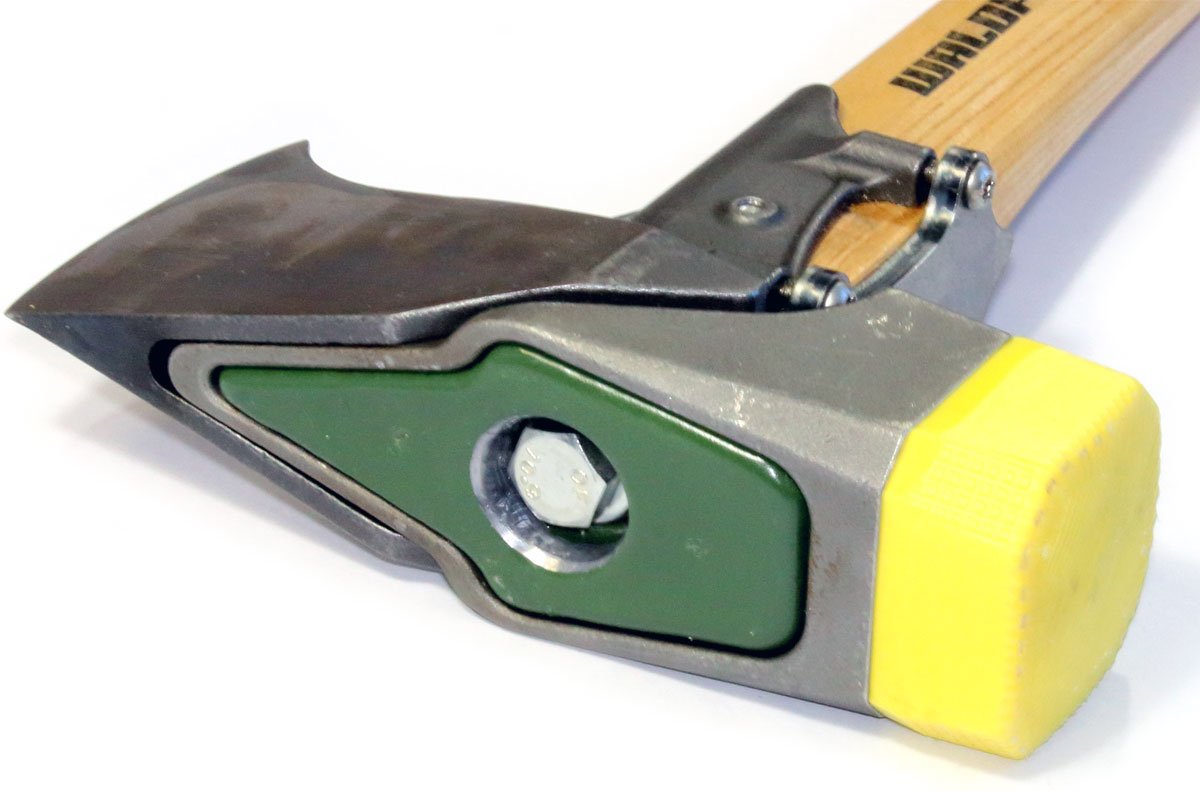
The hardness range refers to the Rockwell hardness (HRC) of the steel used to make the maul head after heat treatment. The Rockwell hardness method uses diamond probe to measure how hard steel is. The higher the HRC number indicated, the stronger and harder the steel is. A good example of a hardy maul is the 1844 Helko Werk Germany Traditional Splitting Maul. When choosing between any two mauls, go for the model with a higher hardness range as it’s bound to withstand frequent impact with wood, the steel of wedges, and the occasional stone better.
Grip has to do with how well the handle stays in your hand when you hold the maul. The best splitting maul has a firm grip and your hands won’t slide up and down when using it. Most splitting mauls come with a good grip, but it costs nothing to feel the handle up and down a second or third time just to be sure. This way, you’re able to feel and test the difference between the handles of any two splitting mauls. The Wilton Tools B.A.S.H. is an example of a splitting maul with an exceptionally good grip.
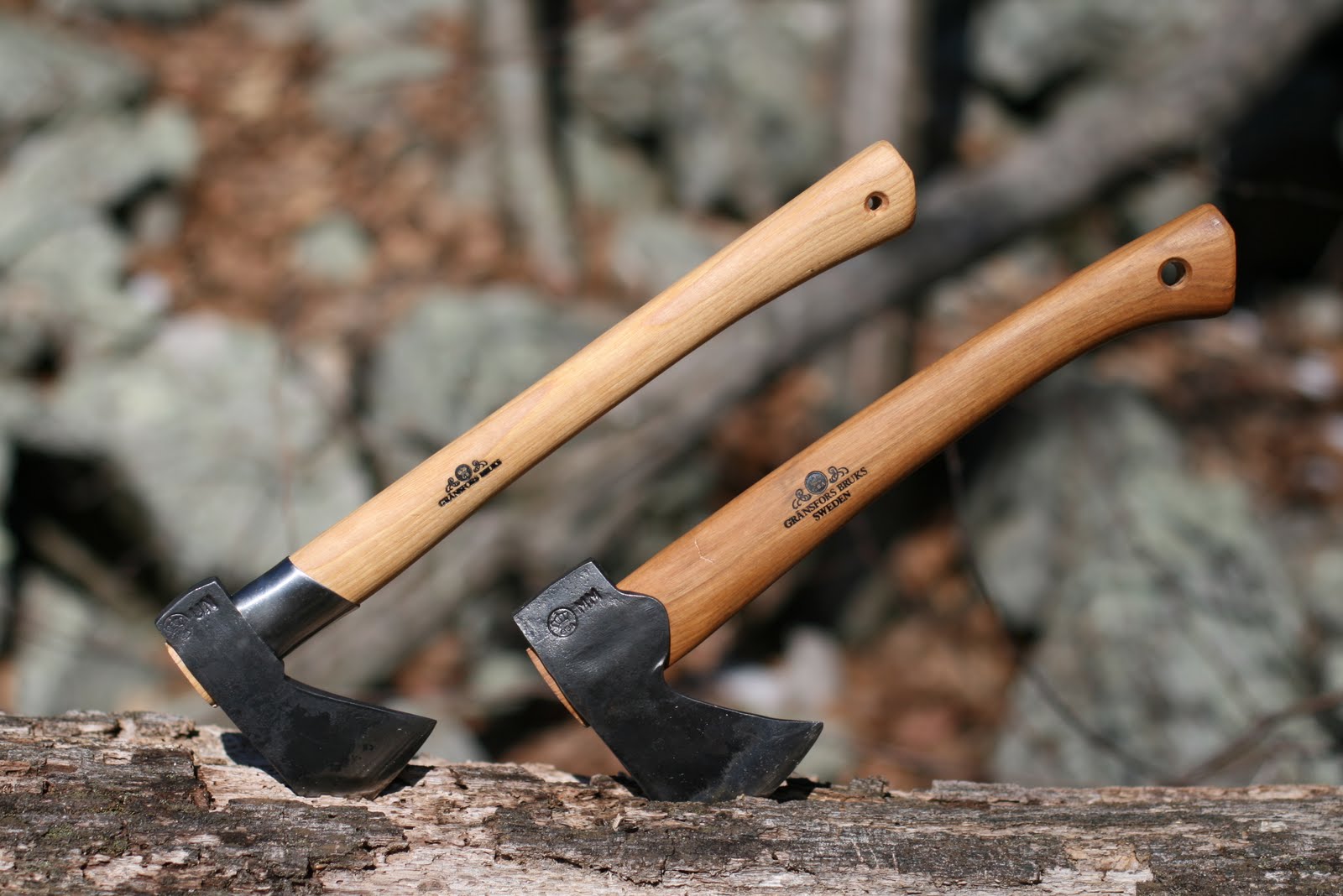
The sheath will protect your splitting maul blade from accidentally cutting into hard surfaces such as rocks or stones that may dull it. It’s also a protective cover that keeps you and others, especially children, from getting injured by the blade. Most sheaths are made from leather, though it’s not unusual to come across sheaths made from faux leather. Examples of top mauls with premium sheaths are Gransfors Bruks Splitting Maul and 1844 Helko Werk Germany Traditional Splitting Maul. The material used to make the sheath isn’t as important as how practical the sheath is, although a natural material like leather would have advantages over synthetic materials, and vice versa for synthetic materials over natural. So it becomes a matter of personal preference.
For most left-handed people, the left hand is the stronger hand. As such, this is the hand they would typically place near the head when lifting the splitting maul. Right-handed people would typically place their stronger right hand down by the head. Other than this difference in handling, which may not apply to everyone, the left-handed person uses the splitting maul just like the right-handed person.
Yes. You can replace the handle of your splitting maul at any time. If your maul has a fiberglass or metal handle, you probably won’t have a problem with it. However, wooden handles tend to break more easily and therefore need to be replaced more often.
For safety purposes, yes. But it comes down to what you prefer as an individual. There is always the risk of stray split logs hitting you on the shins or feet or splinters flying to your face or eyes. Wearing goggles, shin protectors, and perhaps, gloves for your hands will keep you safe when using a splitting maul.
We liked the Gransfors Bruks Splitting Maul best; it’s lightweight construction and ease of use easily winning us over. This is a maul that splits both large and small logs easily, and does not seem to have trouble splitting tougher woods. It can be used on any type of wood and it won’t disappoint. For this, it takes first position.
The 1844 Helko Werk Germany Traditional Splitting Maul took second position. It works a lot like the Gransfors Bruks and was able to split every kind of wood that we tried. The only reason it lost to the Gransfors is its heavier weight.
At third position is the Halder 3007.160, a solidly-constructed splitting maul that effectively splits all kinds of woods, big and small. Like the Helko Werk, it’s heavy, and at 10 pounds, you’ll need plenty of muscle to use it for a considerable length of time every day if you’re a heavy user. There you go: our top three picks for best splitting maul for all-season use.
